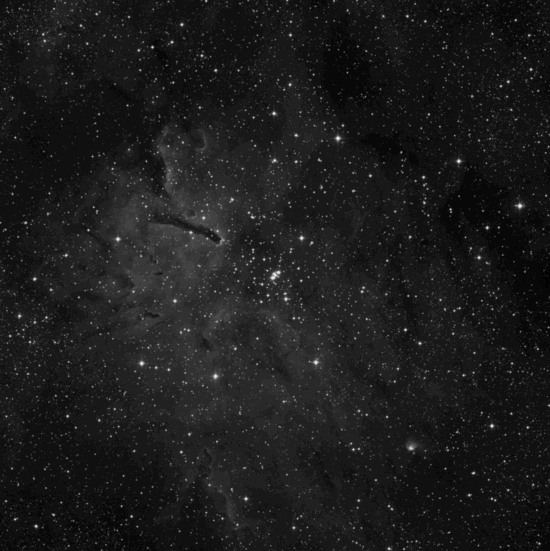[/caption]
Earlier this year, I wrote an article about a Cepheid variable star named V19 in M31. This Cepheid was one that once pulsated strongly and was one of the variables Hubble first used to find the distance to the Andromeda galaxy. But today, V19 is a rare instance of a Cepheid that has seemingly, stopped pulsating. Another example of this phenomenon is that of Polaris, which has decreased in the amplitude of brightnesses by nearly an order of magnitude in the past century, although some reports indicate that it may be beginning to increase again. Meanwhile, a new paper is looking to add another star, HDE 344787, to this rare category and according to the paper, it may be “even more interesting than Polaris”.
The star in question, HDE 344787, is a F class supergiant. Although the variations in brightness have been difficult to observe, due to their small amplitude, astronomers have revealed two fundamental pulsation modes corresponding to 5.4 days and 3.8 days. But perhaps even more interesting, is that the 5.4 day period seems to be growing. Careful analysis of the data suggests that this period is growing by about 13 seconds per year. This finding is in strong agreement with what is predicted by models of stellar evolution for stars with metallicity similar to the sun passing through the instability strip for the first time.
HDE 344787 is similar in Polaris in that both stars share the same spectral type. However, the existence of two modes of pulsation is not seen in Polaris. The lengthening of the period of pulsation, however, is seen. For Polaris, its variation is growing by 4.5 seconds per year. Another similarity is that, like Polaris and V19, has been decreasing in the amplitudes of its brightness since at least 1890.
While the addition of this star to the collection of Cepheids that have decreased their amplitude, it does little to solve the mystery of why they might do so. Currently, both Polaris and HDE 344787 lie near the middle of the instability strip and, as such, are not simply evolving out of the region of instability. However, the confirmation of second pulsational mode may lend support to the notion that a change in one of these modes may serve to dampen the other, creating an effect known as the Blazhko Effect.
Ultimately, this star will require further observations to understand its nature better. Due the the faintness of this star (~10th magnitude) as well as the small change in brightness from the pulsations and the dense stellar field on which it lies, observations have been notoriously challenging.


I think it’s safe to say that this is the result of the Q-continuum’s ongoing civil war. We can only hope they agree to a cease fire before the damage to subspace is irreversible.
Observation- When I was a kid, growing up in the wilds of the Florida prairie in the fifties, the North Star was easy to find and seemed much brighter. Today I live at 3200 feet alt. in the NC mtns and, on the clearest nights, it seems much dimmer. Could be my eyes, but most other stars seem as bright as ever. Except Betelgeuse, of course.
Has it dimmed enough to be that easily observed?